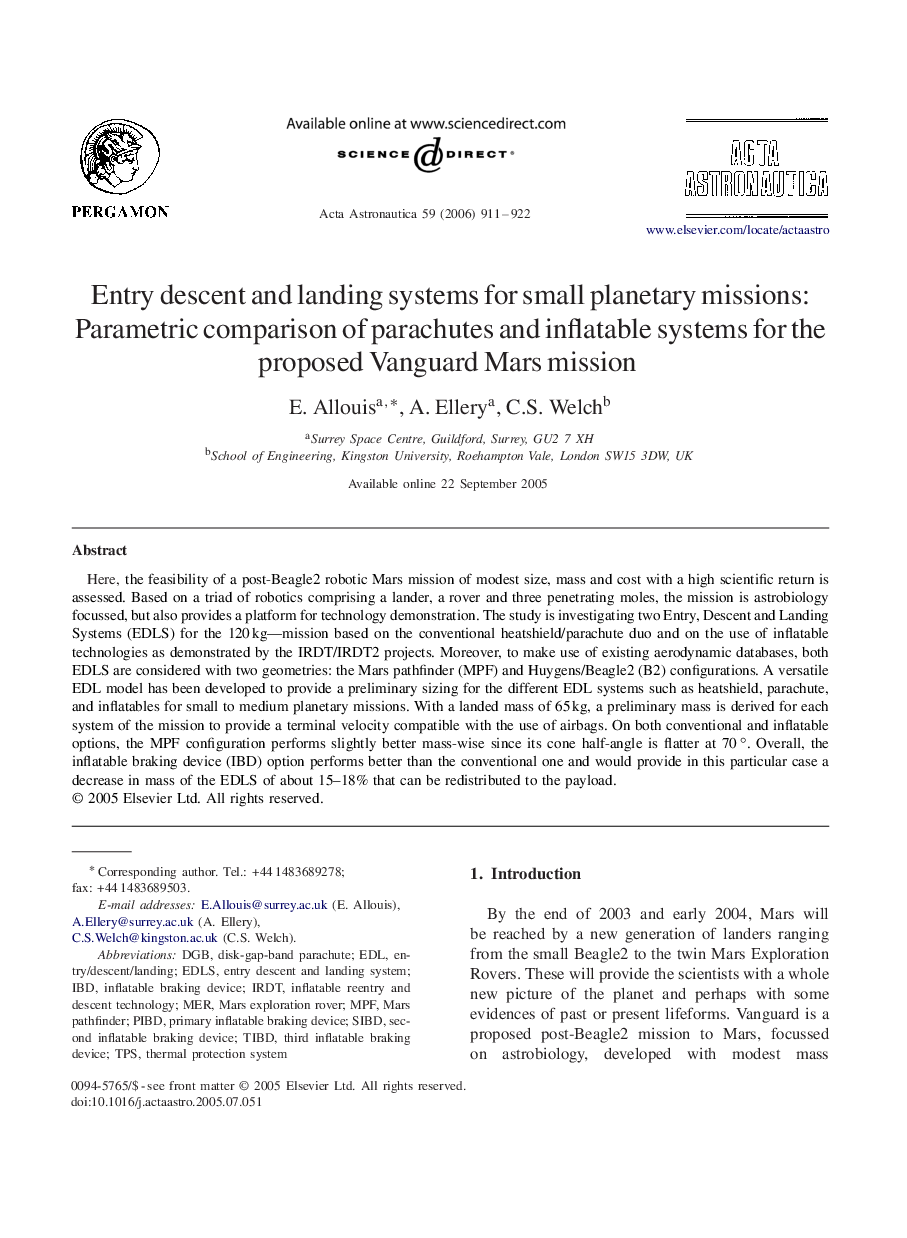| کد مقاله | کد نشریه | سال انتشار | مقاله انگلیسی | نسخه تمام متن |
|---|---|---|---|---|
| 1717333 | 1520030 | 2006 | 12 صفحه PDF | دانلود رایگان |

Here, the feasibility of a post-Beagle2 robotic Mars mission of modest size, mass and cost with a high scientific return is assessed. Based on a triad of robotics comprising a lander, a rover and three penetrating moles, the mission is astrobiology focussed, but also provides a platform for technology demonstration. The study is investigating two Entry, Descent and Landing Systems (EDLS) for the 120 kg—mission based on the conventional heatshield/parachute duo and on the use of inflatable technologies as demonstrated by the IRDT/IRDT2 projects. Moreover, to make use of existing aerodynamic databases, both EDLS are considered with two geometries: the Mars pathfinder (MPF) and Huygens/Beagle2 (B2) configurations. A versatile EDL model has been developed to provide a preliminary sizing for the different EDL systems such as heatshield, parachute, and inflatables for small to medium planetary missions. With a landed mass of 65 kg, a preliminary mass is derived for each system of the mission to provide a terminal velocity compatible with the use of airbags. On both conventional and inflatable options, the MPF configuration performs slightly better mass-wise since its cone half-angle is flatter at 70∘. Overall, the inflatable braking device (IBD) option performs better than the conventional one and would provide in this particular case a decrease in mass of the EDLS of about 15–18% that can be redistributed to the payload.
Journal: Acta Astronautica - Volume 59, Issues 8–11, October–December 2006, Pages 911–922